Drone footage shows Russian troops using Ukrainian POWs as HUMAN SHIELDS during gun battle – with one prisoner shot dead
Russian soldiers are using Ukrainian prisoners of war as human shields, according to footage obtained by journalists, showing a prisoner being shot dead in a firefight.
The video of fighting in Ukraine's Zaporizhia Oblast, filmed from above by a drone, appears to show several of Vladimir Putin's fighters firing from behind captured Ukrainian soldiers.
Reporters from Radio Free Europe (RFE) say they have been able to identify the location of the battle, but have not made this information public at the request of the Ukrainian military.
However, RFE was able to identify Russian soldiers from the 234th Air Assault Regiment (part of the 76th Air Assault Division) in the footage, confirming their presence in what was reportedly a frontline sector.
Kiev's forces are currently battling Moscow's armies along the hundreds of kilometers of frontline in eastern and southern Ukraine, where fighting has broken a stalemate in recent months.
Russian soldiers are using Ukrainian prisoners of war as human shields, aerial footage (photo) obtained by journalists shows a prisoner being shot dead in a firefight
The conflict has degenerated into a grueling war involving trenches, artillery, tanks and minefields – similar to those in World War II – combined with the use of modern technology such as drones.
Although neither side has made significant territorial progress, fierce fighting continues on a daily basis.
The newly released footage shows Russian troops advancing towards a grove of dead, leafless trees, presumably aiming to clear a position occupied by Ukrainian forces.
One of the Russian soldiers walks along a dirt path that runs along the grove, using an unarmed captured member of the Ukrainian army for cover.
He is seen leading his prisoner by the shoulder with one hand while firing his rifle with the other.
The footage also shows other captured Ukrainian troops walking alongside Russian soldiers, shooting into trees and throwing explosives.
The aerial video clip ends with one of the Ukrainian men falling to the ground. It is believed he was shot.
Both Ukrainian fighters and journalists said the Russians used the human shields to stop the Ukrainian soldiers they were fighting from shooting at them as they advanced.
The RFE reporters also said they did not know the fate of the POWs.
Ukrainian Ombudsman Dmytro Lubinets said that if what the video shows is indeed true, Russia has violated the Geneva Conventions, which prohibit the use of human shields.
It also outlines how countries should treat captured fighters. The video also shows that the Russian soldiers also violated conventions in this area.
“If this is the case, this will officially establish a new violation of the Geneva Conventions by the Russian Federation,” Lubinets said. “This is the first video of its kind I've seen. I didn't have such data before.'
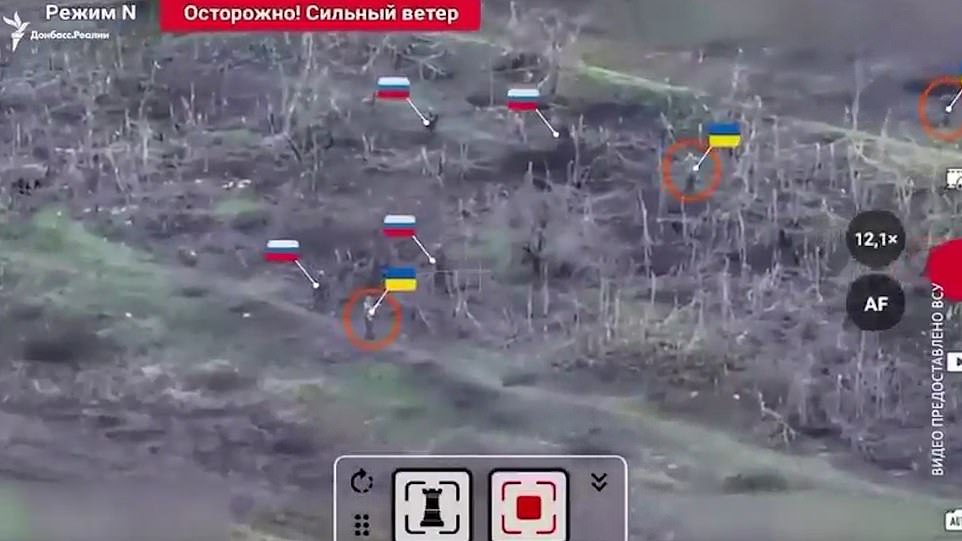
The newly released drone footage (pictured) shows Russian forces advancing towards a grove of dead, leafless trees, presumably aiming to clear a position occupied by Ukrainian forces. A Russian soldier is seen walking behind a Ukrainian soldier, firing shots at what are believed to be Ukrainian positions among the trees
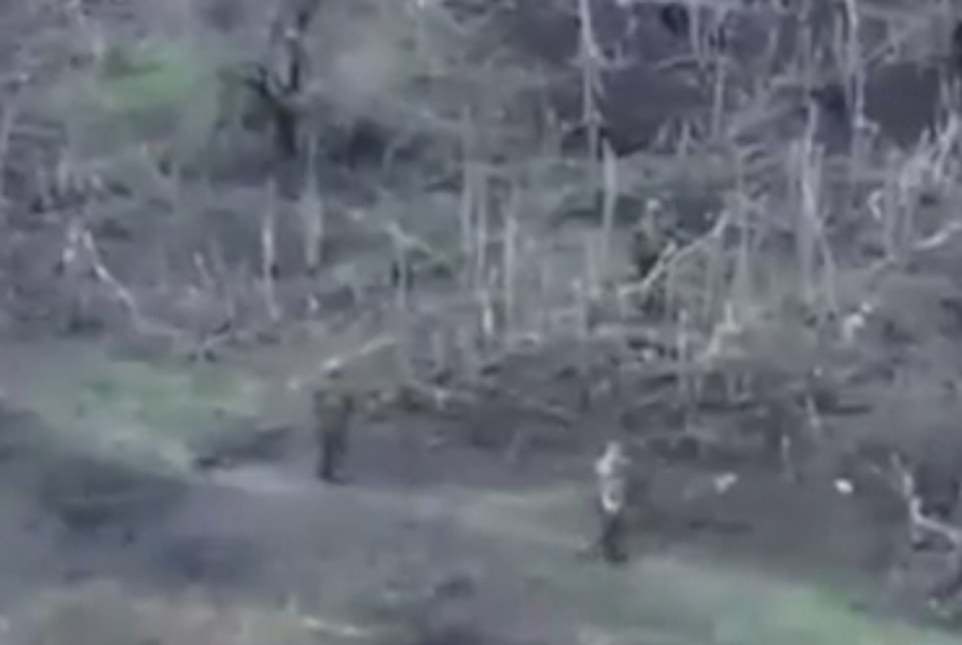
The Ukrainian POW (right) is seen unarmed, while the armed Russian soldier enters the road right behind him
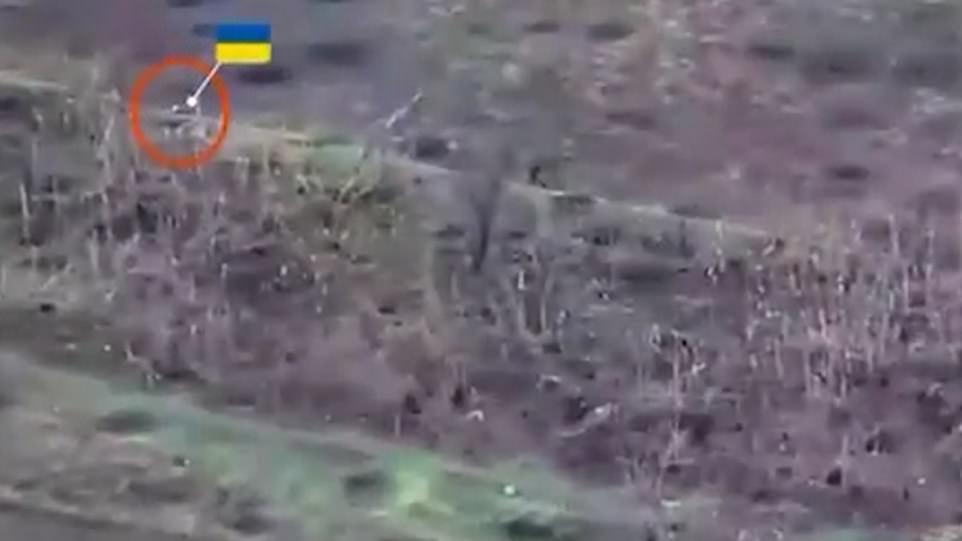
Towards the end of the footage, one of the Ukrainian soldiers falls to the ground, apparently shot
On Thursday, Putin said Russia had deployed more than 600,000 troops in Ukraine, almost two years after he ordered his forces to capture the capital Kiev.
Kiev and Moscow are believed to have suffered huge losses after months of large-scale hostilities, and the United States believes some 315,000 Russian soldiers have been killed or wounded.
'The front line is more than 2,000 kilometers long. There are 617,000 people in the conflict zone,” Putin said during his first year-end press conference since sending his army to Ukraine in February 2022.
He added that around 244,000 mobilized troops are currently stationed in areas of Ukraine controlled by Russian forces.
Putin made these comments during his year-end press conference, where he said there were no immediate plans to introduce a new round of mobilization of Russian men for the conflict.
The echoes of Russia's military operation reverberated in the main hall in central Moscow, where hundreds of journalists passed through four police checkpoints to hear Putin speak.
Russia said it had shot down nine Ukrainian drones headed for Moscow just hours before Putin's event was due to start, while Ukraine said it had shot down 41 of 42 Iranian-designed drones launched by Russian forces in the southern city of Odesa, in a barrage that injured eleven people.
Putin's choreographed call-in show was canceled last year as Moscow reeled from the shock of the early failures of its military operation, in which Ukraine managed to repel the Kremlin's attack on Kiev and then regain territory in the east and south to win.
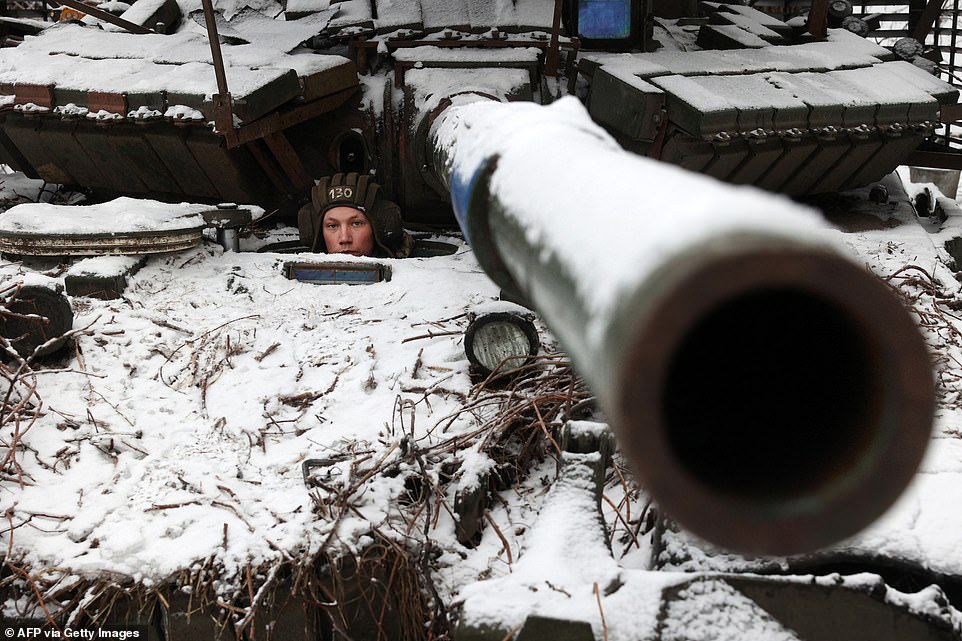
A Ukrainian soldier looks out from a tank near the city of Bakhmut, Donetsk region, on December 13
Ukraine's strong resistance and support from its allies had surprised observers around the world and in Moscow, where many had expected to capture Kiev within days.
But almost two years after his offensive, Putin seems to sense that the tide is turning in his favor.
Putin's call-up show coincided with a crucial summit in Brussels, where Ukraine had hoped to secure a clear path to European Union membership.
But that push is being stymied by Hungarian Prime Minister Viktor Orbán, a Putin ally who has caused fear in both Kiev and Brussels but has staunchly opposed Ukraine's membership.
Orban reaffirmed that position on Thursday before the start of official talks in Brussels, telling reporters that Ukraine had not yet met the “merit-based” criteria to join the 27-nation bloc.
“There is no reason to discuss anything because the conditions have not been met,” Orbán said.
Russia's military revival prompted NATO chief Jens Stoltenberg to warn on Thursday that Putin could attack other countries if Western military support for Kiev fades.
“If Putin wins in Ukraine, there is a real risk that his aggression will not end there,” Stoltenberg said in Brussels.
“Our support is not charity – it is an investment in our security,” he said.
Putin was also heartened by Ukrainian President Volodymyr Zelensky's visit to Washington this week, where he failed to overcome Republican opposition in Congress to pass a new $60 billion aid package.
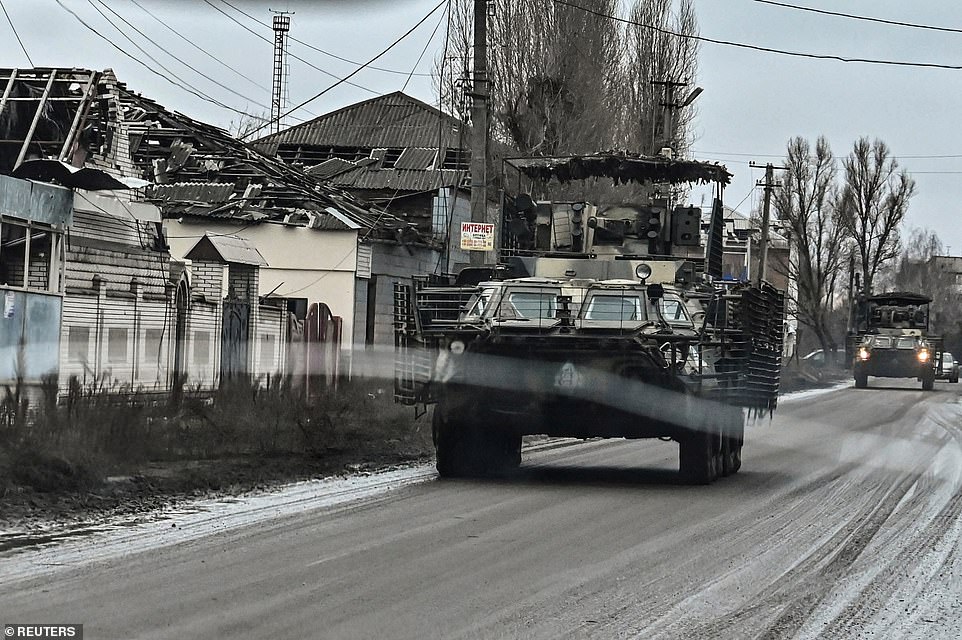
Ukrainian soldiers drive BTR-4 armored personnel carriers along a road in the city of Orikhiv, amid the Russian attack on Ukraine, Zaporizhia region, December 13
Moscow, meanwhile, is still able to continue its military efforts through oil sales, which Putin spoke about this month during a trip to the UAE and Saudi Arabia, where he was received with full honors.
In any case, Putin's re-election campaign, which he launched last week, is unlikely to be forced to address the real economic and human costs of the offensive.
His biggest challenge since the start of the operation came during a wave of protests that emerged in response to a military call organized by the Kremlin in the summer of 2022.
The fear of being drafted into the military caused temporary panic among draft-age men, causing tens of thousands of people to flee to neighboring former Soviet republics and countries such as Turkey.
